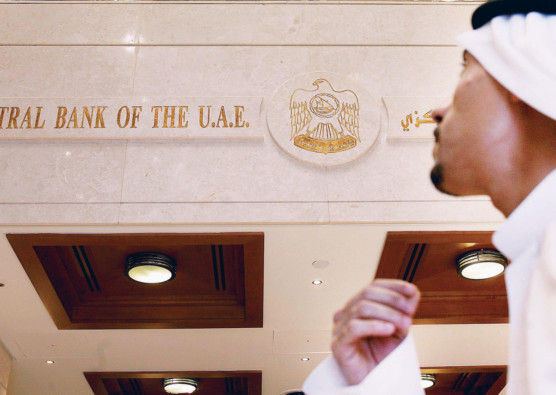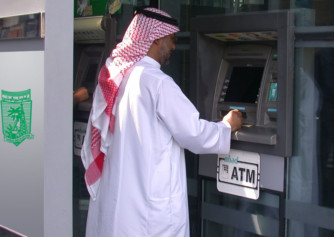
Starved for capital and constantly grappling with books laden with bad debts and assets rapidly deteriorating in quality — this is the image that comes to mind when you think of a bank trying to survive the years following the autumn of 2008 when the economic crisis jolted the very foundations of the world’s financial systems.
Today, the UAE’s banks have only a few scars to show of those troubled times. The bankers here, especially those with financial institutions in Abu Dhabi, are actually faced with an altogether different sort of worries: They now have to find ways to efficiently deploy the excess capital they have on their books, a clear sign that the lenders are well past the financial crisis still gripping Europe and the Americas, according to bankers and analysts.
Government lifeline
In fact, the banks are so flush with capital now that they have started paying back government support funds that the Ministry of Finance made available in 2008-09.
The ministry gave local lenders a lifeline when liquidity vanished and banks struggled to raise capital from the debt market as interest rates shot up. It placed Dh70 billion with the financial institutions to help them counter the impact of the Lehman Brothers collapse. The financial institutions shored up their balance sheets by converting the ministry loans into tier-2 capital or supplementary capital with a deadline to repay the funds by 2016, according to reports.
National Bank of Abu Dhabi (NBAD), the largest lender in the emirate, in March said it is settling its government loan in full — several years ahead of the due date. The bank has already paid Dh2.6 billion of its Dh5.6 billion loan last year and will be repaying the rest within the first half of this year.
NBAD is one of several financial institutions that have fully or partially repaid the government well in advance. Abu Dhabi Commercial Bank has cleared up Dh4.4 billion of its Dh6 billion government support fund and Union National Bank has settled Dh1.5 billion of the Dh3.2 billion it received. Abu Dhabi-based First Gulf Bank, the second-largest lender in the UAE by market value, has repaid its entire liability of Dh4.5 billion out of its cash reserves. Dubai Islamic Bank, the largest Islamic lender in the UAE, RAK Bank and National Bank of Umm Al Quwain have also settled the government bailout, according to reports.
The debt capital market has improved a lot since the tumultuous days of 2008-09. “The easy access to the capital markets was the prime reason the banks have been able to [repay] the bailout money,” says Mohammad Ali Yasin, General Manager, NBAD Securities.
Higher rates
Kashif Moosa, Head of Business Development, Dubai Islamic Bank, and Hasnain Malek of independent research provider Frontier Alfa Research agree.
The funds were no longer needed as they were issued at commercial rates, far higher than the prevalent interest rates in the capital markets, says Moosa. He points out that another reason banks are keen on writing the government liability off their books is that the tier-2 capital was no longer relevant under the Basel III banking regulations.
Abu Dhabi banks, Moosa argues, have fared relatively better than some of their counterparts in Dubai during the financial crisis. The asset quality had not suffered so much and they had less of a headache in terms of non-performing loans, which put lenders in the capital a step ahead of some Dubai-based financial institutions in terms of recovery.
Making provision for non-performing loans, or bad debts, is also on the decline for some Abu Dhabi lenders. There has been some growth in retail financing and lending to the government and semi-government institutions, says Yasin.
However, what the market hasn’t seen so far is enough financing going out to private sector corporations. “Lending to the private sector has not been at the level that reflects the strength of the liquidity position of the banks,” he says.
Yasin believes banks in the capital would have to adopt an aggressive strategy in terms of lending to the private sector to be able to benefit from the excess capital they hold.
Challenges ahead
In terms of profitability, the first quarter of this year has also been very strong for some Abu Dhabi banks. It will be difficult for the banks to better their first-quarter numbers, but Yasin hopes the second quarter will come to confirm the first-quarter numbers, which would be a clear indication that the lenders are consolidating and growth can be expected going forward.
Malek, however, points out that lenders’ recent financial performance, which surpassed the market consensus, is a one-off gain driven by the banks repaying the government loans and coming out of the financial crisis; the challenge for the banks is growth and margins. “Overall, the picture is one of stability, but anaemic growth in recurring profits [remains],” he adds.
In terms of infrastructure, the Abu Dhabi government prioritised projects last year and is getting the ball rolling this year in a modest way. However, how much the government will need bank financing for this remains to be seen, given its own deep pockets and recurring cash flow from oil revenues, says Malek.
For Yasin, it’s still a developing story. “The more the macro picture and infrastructure project space improves, the more the banks are going to benefit.”









